-
 Bitcoin
Bitcoin $83,822.4170
1.13% -
 Ethereum
Ethereum $1,813.6102
1.14% -
 Tether USDt
Tether USDt $0.9998
0.01% -
 XRP
XRP $2.1222
3.18% -
 BNB
BNB $596.3480
0.70% -
 Solana
Solana $120.9540
4.53% -
 USDC
USDC $1.0001
0.01% -
 Dogecoin
Dogecoin $0.1701
5.09% -
 Cardano
Cardano $0.6610
1.76% -
 TRON
TRON $0.2385
-0.20% -
 UNUS SED LEO
UNUS SED LEO $9.1952
-3.85% -
 Chainlink
Chainlink $12.9099
0.96% -
 Toncoin
Toncoin $3.3204
-5.86% -
 Stellar
Stellar $0.2592
-0.36% -
 Avalanche
Avalanche $18.1903
0.62% -
 Sui
Sui $2.2467
2.06% -
 Shiba Inu
Shiba Inu $0.0...01234
1.62% -
 Hedera
Hedera $0.1632
0.53% -
 Litecoin
Litecoin $84.5521
1.58% -
 Polkadot
Polkadot $4.0326
0.22% -
 MANTRA
MANTRA $6.2623
-1.67% -
 Bitcoin Cash
Bitcoin Cash $300.9068
-0.19% -
 Bitget Token
Bitget Token $4.5289
1.12% -
 Dai
Dai $1.0001
0.01% -
 Ethena USDe
Ethena USDe $0.9991
-0.03% -
 Hyperliquid
Hyperliquid $12.0972
2.83% -
 Monero
Monero $216.6391
1.04% -
 Uniswap
Uniswap $5.8853
0.50% -
 Pi
Pi $0.4789
-15.16% -
 OKB
OKB $51.0001
8.81%
What exactly is decentralized finance (DeFi)? How is it different from traditional banks?
DeFi transforms finance with blockchain, offering lending, borrowing, and trading without banks, enhancing accessibility, security, and transparency.
Apr 04, 2025 at 12:07 pm
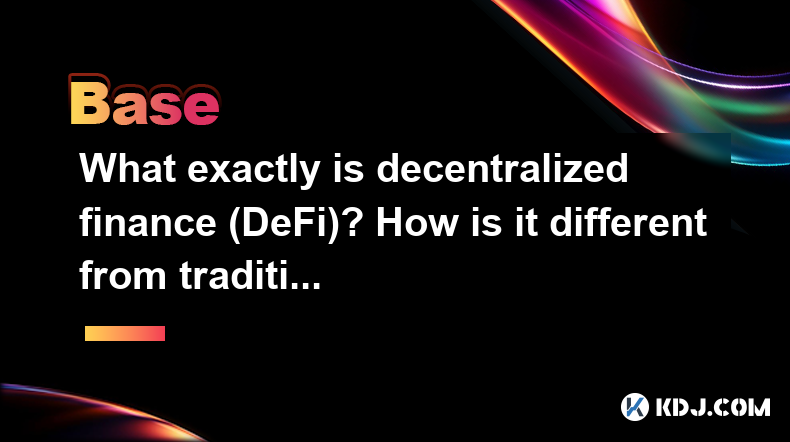
Decentralized finance, commonly known as DeFi, represents a transformative shift in the financial sector by leveraging blockchain technology to create a more open, accessible, and efficient financial ecosystem. At its core, DeFi aims to recreate traditional financial systems such as lending, borrowing, and trading, but without the need for centralized intermediaries like banks. Instead, these services are facilitated through smart contracts on blockchain networks, primarily Ethereum, allowing for greater transparency and security.
One of the key distinctions between DeFi and traditional banking lies in their operational structure. Traditional banks operate as centralized entities that control and manage financial transactions, customer data, and funds. These institutions often impose strict regulations, fees, and requirements that can limit access to financial services. In contrast, DeFi platforms operate on decentralized networks where transactions are executed automatically by smart contracts. This not only reduces the need for intermediaries but also lowers costs and speeds up transaction times.
The accessibility of DeFi is another significant differentiator. Traditional banking systems often require individuals to meet certain criteria, such as credit scores or minimum balances, to access services. DeFi, on the other hand, is designed to be inclusive, allowing anyone with an internet connection and a cryptocurrency wallet to participate. This democratization of finance is particularly beneficial for the unbanked and underbanked populations around the world, providing them with opportunities to engage in financial activities that were previously out of reach.
Security and transparency are also enhanced in DeFi compared to traditional banking. In traditional systems, banks hold and manage customer funds, which can be vulnerable to fraud, mismanagement, or collapse. DeFi platforms, however, rely on blockchain technology, which provides a public ledger of all transactions. This transparency not only increases trust among users but also reduces the risk of fraudulent activities. Additionally, since funds are held in smart contracts rather than centralized institutions, they are less susceptible to hacks or mismanagement.
The range of services offered by DeFi platforms is continually expanding, mirroring and often surpassing those available in traditional banking. Some of the most common DeFi services include lending and borrowing, decentralized exchanges (DEXs), yield farming, and stablecoins. These services are not only accessible 24/7 but also offer users the ability to interact directly with the financial system without intermediaries, thereby giving them more control over their financial decisions.
How DeFi Lending and Borrowing Works
Lending and borrowing are among the most popular DeFi applications, offering users the ability to earn interest on their cryptocurrency holdings or borrow assets without going through a bank. Here's how it typically works:
Lending: Users deposit their cryptocurrencies into a DeFi lending platform, which pools these assets together. These pooled assets are then lent out to borrowers, and in return, lenders receive interest payments. The interest rates are often determined by supply and demand dynamics within the platform.
Borrowing: Borrowers can take out loans by providing collateral, usually in the form of another cryptocurrency. The collateral is locked in a smart contract, and if the borrower fails to repay the loan, the collateral can be liquidated to cover the debt. This system allows borrowers to access funds without a credit check, making it more inclusive than traditional banking.
Decentralized Exchanges (DEXs)
Decentralized exchanges, or DEXs, are another cornerstone of the DeFi ecosystem. Unlike centralized exchanges, which hold user funds and execute trades on behalf of users, DEXs allow users to trade directly with each other through smart contracts. This peer-to-peer trading model offers several advantages:
Control Over Funds: Users maintain control over their assets at all times, as funds are not held by a centralized entity. This reduces the risk of hacks and fraud.
Anonymity: DEXs often require less personal information, providing users with greater privacy.
Accessibility: Anyone can use a DEX, regardless of their location or financial status, making it a more inclusive option for trading.
Yield Farming and Liquidity Provision
Yield farming is a practice where users provide liquidity to DeFi platforms in exchange for rewards. This can be a lucrative way to earn passive income, but it also comes with risks. Here's how it works:
Providing Liquidity: Users deposit their cryptocurrencies into liquidity pools on DeFi platforms. These pools are used to facilitate trades on DEXs or other DeFi services.
Earning Rewards: In return for providing liquidity, users receive tokens or a portion of the transaction fees generated by the platform. These rewards can vary based on the platform and the specific pool.
Risks: Yield farming can be risky due to the volatility of cryptocurrency markets and the potential for smart contract vulnerabilities. Users must carefully assess the risks before participating.
Stablecoins in DeFi
Stablecoins play a crucial role in the DeFi ecosystem by providing a stable value asset that can be used for transactions, lending, and borrowing. Unlike other cryptocurrencies, stablecoins are designed to maintain a stable value, often pegged to a fiat currency like the US dollar. There are several types of stablecoins, including:
Fiat-collateralized stablecoins: These are backed by reserves of fiat currency held in a bank account.
Crypto-collateralized stablecoins: These are backed by other cryptocurrencies held in a smart contract.
Algorithmic stablecoins: These use algorithms to control the supply of the stablecoin in order to maintain its peg.
Stablecoins are essential for DeFi because they provide a way to mitigate the volatility of other cryptocurrencies, making them a more reliable medium for financial transactions.
The Role of Smart Contracts in DeFi
Smart contracts are the backbone of DeFi, enabling the automation and enforcement of financial agreements without the need for intermediaries. These self-executing contracts are coded to execute transactions automatically when certain conditions are met. Here are some key aspects of smart contracts in DeFi:
Automation: Smart contracts automate the execution of financial agreements, reducing the need for manual intervention and increasing efficiency.
Transparency: All smart contract code is visible on the blockchain, allowing users to verify the integrity of the contract before participating.
Security: While smart contracts can be secure, they are not immune to vulnerabilities. It's essential for users to audit the code and understand the risks involved.
Interoperability: Many DeFi platforms are built to be interoperable, allowing users to move assets between different protocols seamlessly.
Frequently Asked Questions
Q1: What are the risks associated with using DeFi platforms?
A1: DeFi platforms, while innovative, come with several risks. These include smart contract vulnerabilities, which can lead to hacks and loss of funds; high volatility in cryptocurrency markets, which can affect the value of assets used in DeFi; and regulatory uncertainty, as the legal status of DeFi can vary by jurisdiction. Users should conduct thorough research and understand these risks before engaging with DeFi platforms.
Q2: How can I get started with DeFi?
A2: To get started with DeFi, you'll need a cryptocurrency wallet that supports interaction with DeFi platforms, such as MetaMask. Next, you'll need to acquire some cryptocurrency, typically Ethereum, to participate in DeFi services. Once you have these, you can explore various DeFi platforms, such as lending protocols, DEXs, and yield farming opportunities. It's crucial to start with small amounts and thoroughly research each platform before committing funds.
Q3: Can DeFi replace traditional banking entirely?
A3: While DeFi offers many advantages over traditional banking, it is unlikely to replace it entirely in the near term. Traditional banks provide a wide range of services, including deposit insurance, which DeFi currently does not offer. Additionally, many people are accustomed to the security and familiarity of traditional banking. However, DeFi can complement traditional banking by offering more accessible and innovative financial services.
Q4: What is the role of governance tokens in DeFi?
A4: Governance tokens are used in many DeFi platforms to give users a say in the development and operation of the platform. Holders of these tokens can vote on proposals that affect the platform's rules, fees, and future development. This decentralized governance model is a key feature of DeFi, allowing users to participate in decision-making processes that impact the services they use.
Disclaimer:info@kdj.com
The information provided is not trading advice. kdj.com does not assume any responsibility for any investments made based on the information provided in this article. Cryptocurrencies are highly volatile and it is highly recommended that you invest with caution after thorough research!
If you believe that the content used on this website infringes your copyright, please contact us immediately (info@kdj.com) and we will delete it promptly.
- Circle Internet Group Files for an Initial Public Offering (IPO) on the New York Stock Exchange
- 2025-04-05 11:00:12
- Circle has formally submitted an initial public offering (IPO) application
- 2025-04-05 11:00:12
- Tron Founder Justin Sun Warns Users to Pull Funds from First Digital Trust
- 2025-04-05 10:55:12
- We’ve been looking at quality projects within the AI market lately, and one innovative project we like is Bittensor
- 2025-04-05 10:55:12
- Sun Yuchen Bailed Out Techteryx's TrueUSD Stablecoin After Nearly $500M of Reserve Funds Became Illiquid
- 2025-04-05 10:50:12
- Sumitomo Mitsui Financial Group to Develop a Stablecoin
- 2025-04-05 10:50:12
Related knowledge

Why is the oracle called the bridge between blockchain and the real world?
Apr 04,2025 at 04:00am
The concept of an oracle in the cryptocurrency and blockchain world is crucial for understanding how these decentralized systems interact with external data. The oracle is often referred to as the bridge between blockchain and the real world because it serves as a vital intermediary that fetches, verifies, and transmits off-chain data to the on-chain en...
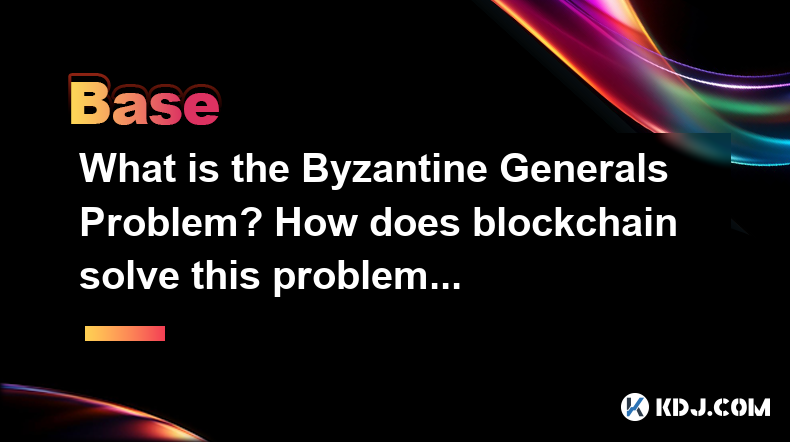
What is the Byzantine Generals Problem? How does blockchain solve this problem?
Apr 05,2025 at 06:29am
The Byzantine Generals Problem is a classic problem in the field of distributed computing and computer science, which has significant implications for the reliability and security of decentralized systems, including blockchain technology. This problem is named after a hypothetical scenario involving several generals of the Byzantine army who must coordi...

What role does the Merkle tree play in the blockchain? Why can it verify data integrity?
Apr 04,2025 at 01:29pm
The Merkle tree plays a crucial role in the blockchain, primarily due to its ability to efficiently and securely verify data integrity. This article will delve into the structure of a Merkle tree, its implementation in blockchain, and how it ensures the integrity of data. Understanding the Structure of a Merkle TreeA Merkle tree, also known as a hash tr...
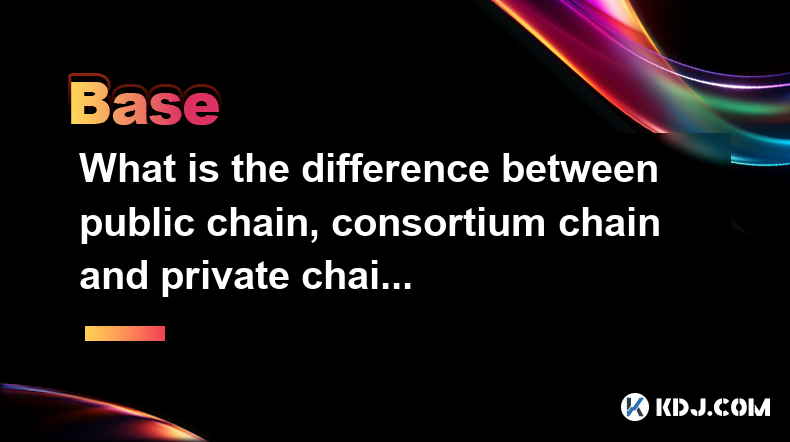
What is the difference between public chain, consortium chain and private chain? What scenarios are suitable for each?
Apr 04,2025 at 09:21pm
In the world of blockchain technology, understanding the differences between public chains, consortium chains, and private chains is crucial for selecting the right type of blockchain for specific applications. Each type of blockchain has its own unique characteristics and use cases, which we will explore in detail. Understanding Public ChainsPublic cha...
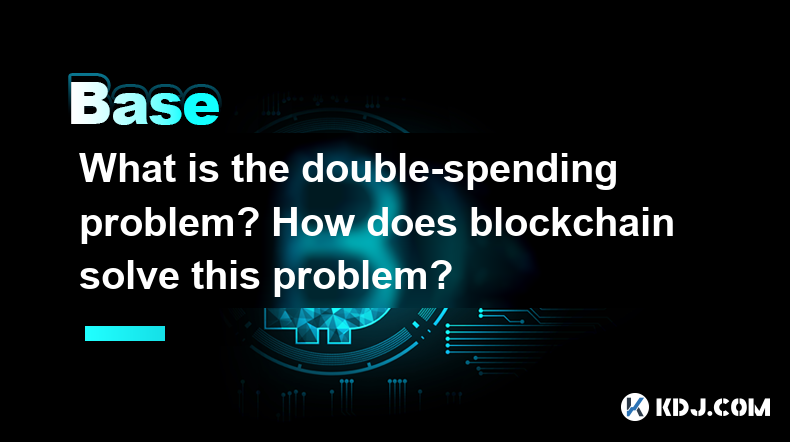
What is the double-spending problem? How does blockchain solve this problem?
Apr 04,2025 at 09:07am
The double-spending problem is a significant challenge in the realm of digital currencies. Double-spending refers to the potential for a digital currency to be spent more than once. This issue arises because digital files, unlike physical cash, can be easily duplicated. If not addressed, double-spending could undermine the integrity and trust in any dig...
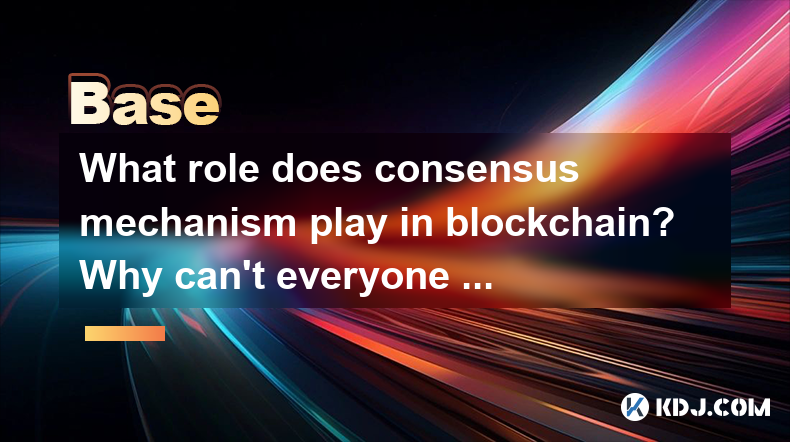
What role does consensus mechanism play in blockchain? Why can't everyone keep accounts?
Apr 05,2025 at 12:29am
The consensus mechanism is a fundamental component of blockchain technology, serving as the backbone for maintaining the integrity and security of the network. It ensures that all participants in the network agree on the state of the ledger, which is crucial for the decentralized nature of blockchain. Without a consensus mechanism, the decentralized sys...

Why is the oracle called the bridge between blockchain and the real world?
Apr 04,2025 at 04:00am
The concept of an oracle in the cryptocurrency and blockchain world is crucial for understanding how these decentralized systems interact with external data. The oracle is often referred to as the bridge between blockchain and the real world because it serves as a vital intermediary that fetches, verifies, and transmits off-chain data to the on-chain en...

What is the Byzantine Generals Problem? How does blockchain solve this problem?
Apr 05,2025 at 06:29am
The Byzantine Generals Problem is a classic problem in the field of distributed computing and computer science, which has significant implications for the reliability and security of decentralized systems, including blockchain technology. This problem is named after a hypothetical scenario involving several generals of the Byzantine army who must coordi...

What role does the Merkle tree play in the blockchain? Why can it verify data integrity?
Apr 04,2025 at 01:29pm
The Merkle tree plays a crucial role in the blockchain, primarily due to its ability to efficiently and securely verify data integrity. This article will delve into the structure of a Merkle tree, its implementation in blockchain, and how it ensures the integrity of data. Understanding the Structure of a Merkle TreeA Merkle tree, also known as a hash tr...

What is the difference between public chain, consortium chain and private chain? What scenarios are suitable for each?
Apr 04,2025 at 09:21pm
In the world of blockchain technology, understanding the differences between public chains, consortium chains, and private chains is crucial for selecting the right type of blockchain for specific applications. Each type of blockchain has its own unique characteristics and use cases, which we will explore in detail. Understanding Public ChainsPublic cha...

What is the double-spending problem? How does blockchain solve this problem?
Apr 04,2025 at 09:07am
The double-spending problem is a significant challenge in the realm of digital currencies. Double-spending refers to the potential for a digital currency to be spent more than once. This issue arises because digital files, unlike physical cash, can be easily duplicated. If not addressed, double-spending could undermine the integrity and trust in any dig...

What role does consensus mechanism play in blockchain? Why can't everyone keep accounts?
Apr 05,2025 at 12:29am
The consensus mechanism is a fundamental component of blockchain technology, serving as the backbone for maintaining the integrity and security of the network. It ensures that all participants in the network agree on the state of the ledger, which is crucial for the decentralized nature of blockchain. Without a consensus mechanism, the decentralized sys...
See all articles





















































































